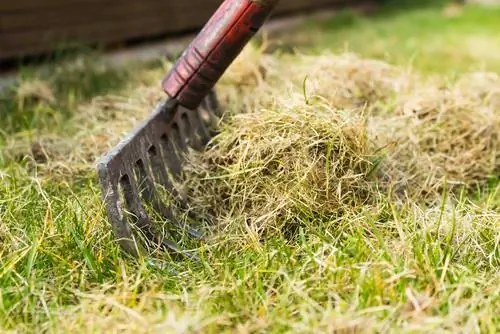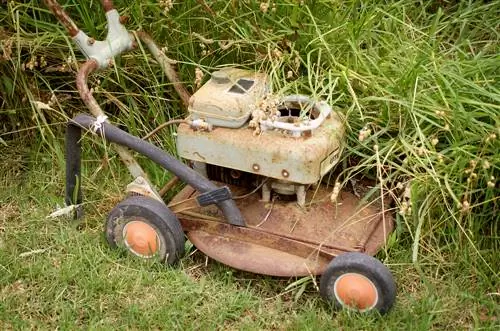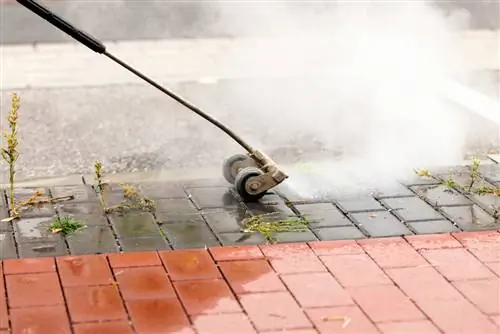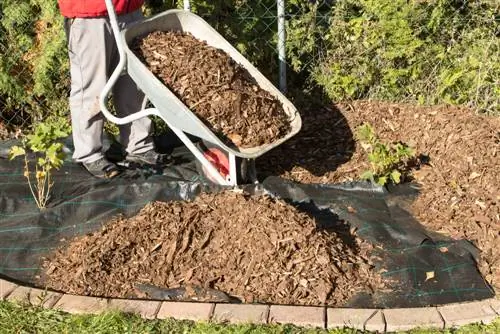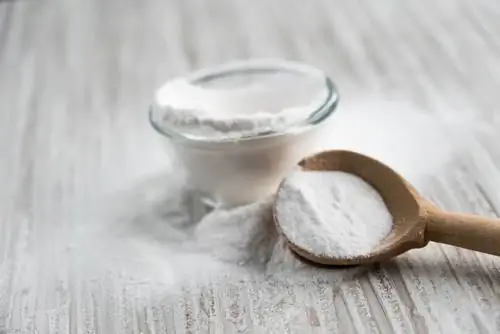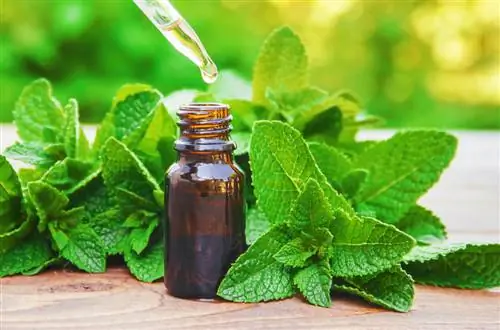- Author admin [email protected].
- Public 2023-12-16 16:46.
- Last modified 2025-01-23 11:22.
If the lawn grows well in the summer months, regular mowing results in a lot of grass clippings. However, the separated stalks are far too good for compost, as they prove to be useful helpers in the fight against weeds. At the same time, they ensure that the soil can retain moisture better on hot summer days.
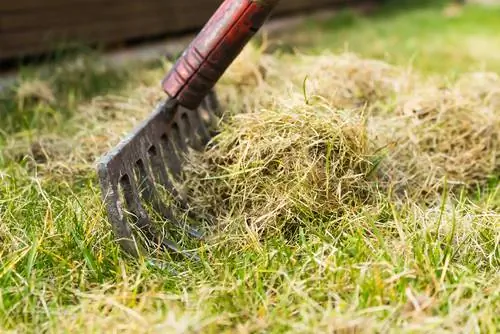
How do lawn clippings help against weeds?
Lawn clippings can be used effectively against weeds by spreading them as a layer of mulch about five centimeters high under plants, hedges or in the vegetable patch. This prevents the growth of weed seeds, protects the soil from drying out and at the same time acts as a natural fertilizer.
What are lawn clippings good for?
Amateur gardeners are often uncertain about what they can do with the clippings.
It's great:
- as fertilizer for the lawn,
- as a mulch layer to control weeds,
- as a slow-acting natural fertilizer,
- as well as a valuable compost addition
use.
Why is mulching so useful?
If you spread lawn clippings across the area in a layer about five centimeters high under hedges, bushes and trees or in the vegetable patch, no sunlight can penetrate this top layer. Since almost all weeds germinate in the light, weed seeds no longer germinate and the annoying work of weeding is almost completely eliminated. The grass clippings are slowly converted by microorganisms and thereby fertilize the plants at the same time.
You can also take advantage of this property when maintaining the property boundary. For example, if you cover the space between the garden house and the fence with grass clippings, you will deprive nettles and other weeds of light and this area, which is often difficult to reach, will remain weed-free.
Leave grass clippings on the lawn
If you mow whenever an increase in length of no more than five centimeters has been achieved, you do not necessarily have to remove the grass clippings. The separated stalks are then short enough to fall between the grass and be converted into valuable humus by soil organisms. This effectively prevents the lawn from becoming covered in moss. Since the turf is sufficiently supplied with nutrients, weed seeds have almost no chance of sprouting.
If you want to use the lawn clippings as your own fertilizer, a mulching mower (€299.00 on Amazon) is a sensible purchase. This device shreds the clippings extremely small while mowing and throws them out again straight away.
Tip
You should never mow too short in the heat of summer. Grass growth is only promoted up to around 26 degrees. If the temperatures exceed this mark, they grow more and more slowly. If you then mow the grass very short and often, the lawn will burn because the shading effect of its own blades is missing. As a result, the soil dries out and the grass dies. Therefore, be sure to adjust the mowing frequency to the outside temperature.

